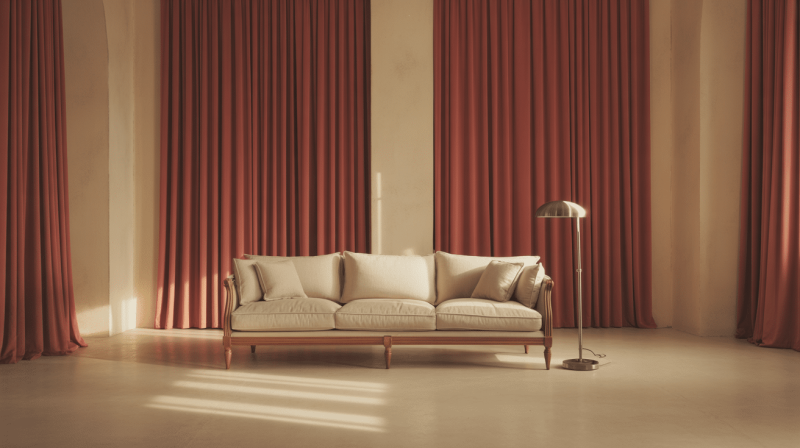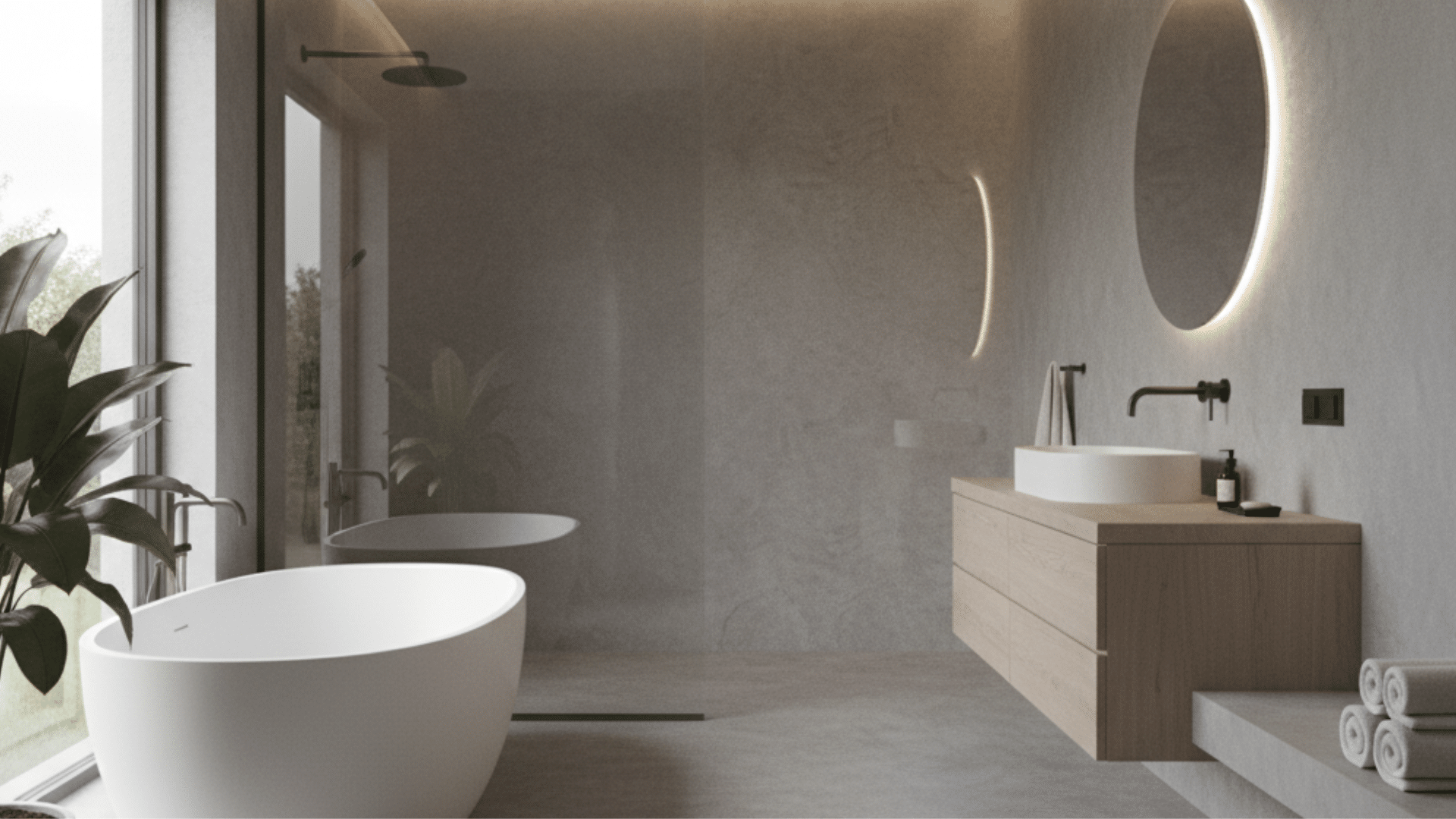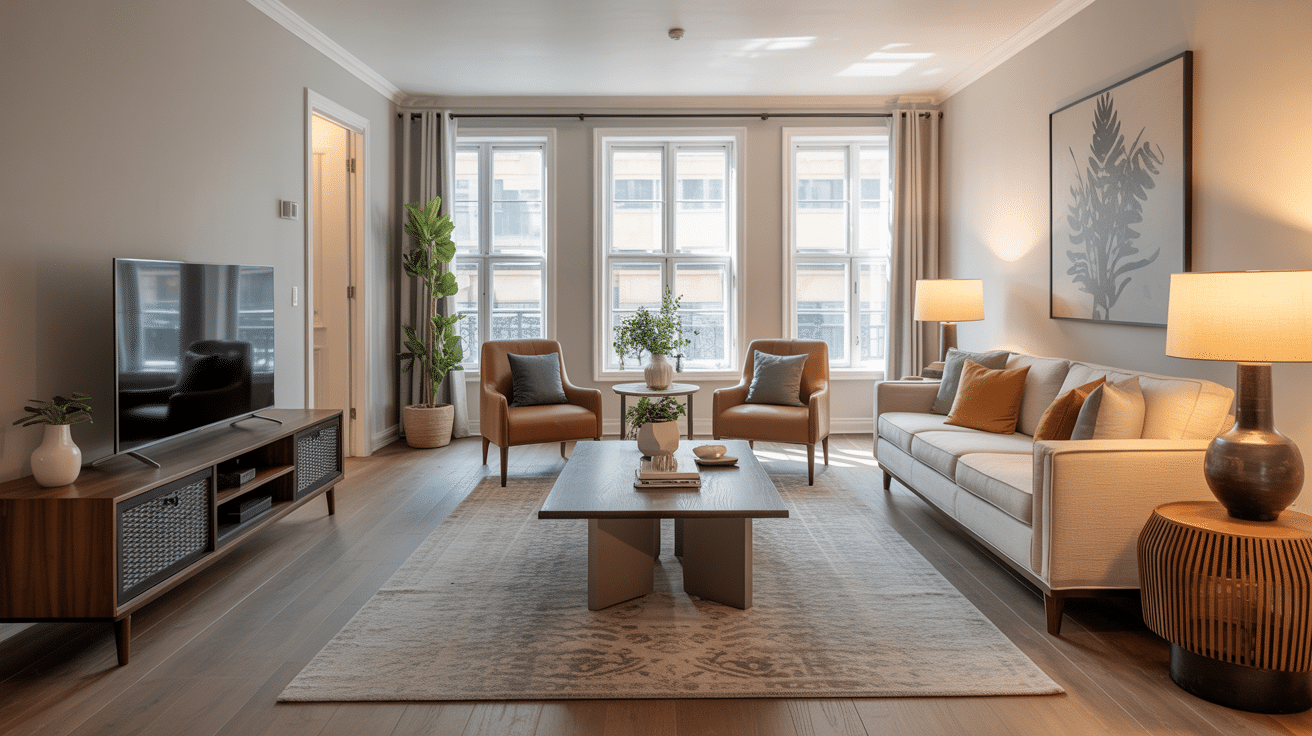Most people hang curtains that look too short, too narrow, or just plain wrong. I used to make these same mistakes until I learned the simple math behind proper curtain sizing. Finding a curtain size chart is the right move.
Getting the right fit isn’t about guesswork; it’s about knowing which measurements matter and how to use them.
This guide will show you exactly how to measure, choose, and hang curtains that look professionally installed every single time.
Are Drapes & Curtains the Same?
Most people think drapes and curtains mean the same thing, but they don’t. The difference actually matters when you’re shopping and decorating your home.
Drapes are the formal, heavy option, lined, thick fabrics that block light completely and hang to the floor with pleats. They work best in living rooms and bedrooms where you want that polished, finished look.
Curtains are lighter and more casual, perfect for kitchens or bathrooms where you need something practical.
I prefer curtains for most rooms because they’re easier to wash and come in a broader range of colors and patterns. Plus, they’re usually more budget-friendly than their formal counterparts.
How to Measure Curtains the Right Way
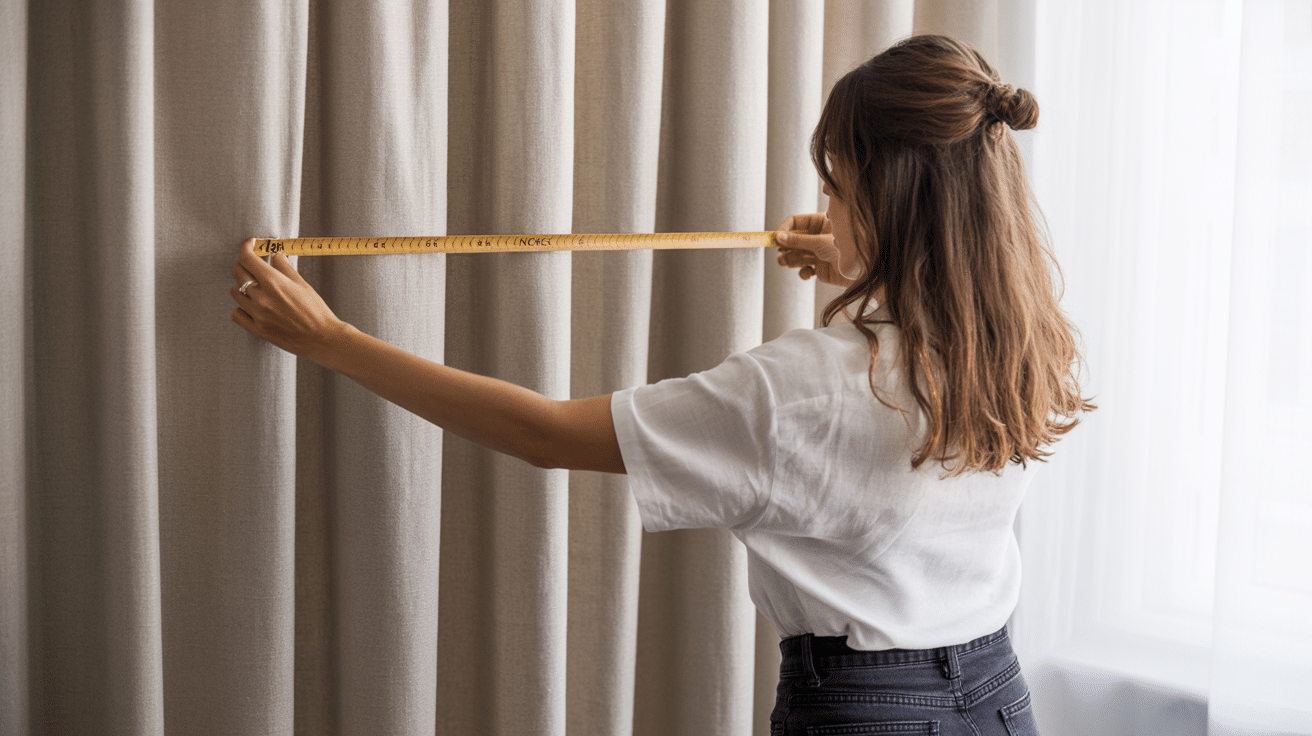
Follow these precise steps to measure your curtains correctly and avoid costly mistakes. The curtain size chart is the next step.
Measure Window Width
To get the perfect curtain width, measure your window, including trim, and multiply it by 1.5 to 2 for a fuller, gathered look. Extend the rod 4 to 10 inches beyond the frame on both sides to maximize light.
Choose Rod Mount Type
Rod placement affects both curtain drape and window perception, so choose an inside mount for a clean finish, an outside mount to make windows look larger, or a ceiling mount for a tall, dramatic effect.
Measure Curtain Length
Measure from the rod position to your preferred curtain drop to match your room’s look. Choose sill or apron length for casual or functional spaces, and floor-length or puddling for a tailored or dramatic style.
NOTE: Curtain sizes like ‘1.5×’ or ‘2.5×’ refer to the total curtain width, including fabric folds. Multiply your window or wall width by this factor to determine how wide your curtains should be for the desired fullness.
Curtain Size Chart for Perfect Fitting
Getting curtains that fit perfectly starts with the right measurements.
This curtain size chart takes the guesswork out of choosing panels, so your windows look professionally dressed every single time you hang them. Check these standard curtain sizes.
| Window Width | Fullness (1.5x – 2x) | Recommended Total Curtain Width | Panel Suggestion | Recommended Length Options |
|---|---|---|---|---|
| 24″ – 36″ | 36″ – 72″ | 1–2 panels (each 40″– 54″) | 1 panel for sheer for a full look | 63″ (sill), 84″ (floor), 96″ (puddle) |
| 36″ – 48″ | 54″ – 96″ | 2 panels | 2 panels (40″–50″ each) | 84″, 96″, or 108″ |
| 48″ – 60″ | 72″ – 120″ | 2–3 panels | 2 wide or 3 standard panels | 84″, 96″, 108″ |
| 60″ – 72″ | 90″ – 144″ | 3 panels | 3 standard or 2 extra wide | 96″, 108″ |
| 72″ – 96″ | 108″ – 192″ | 3 to 4 panels | 2–4 wide panels | 96″, 108″, puddle (108″+) |
Curtain Lengths Chart
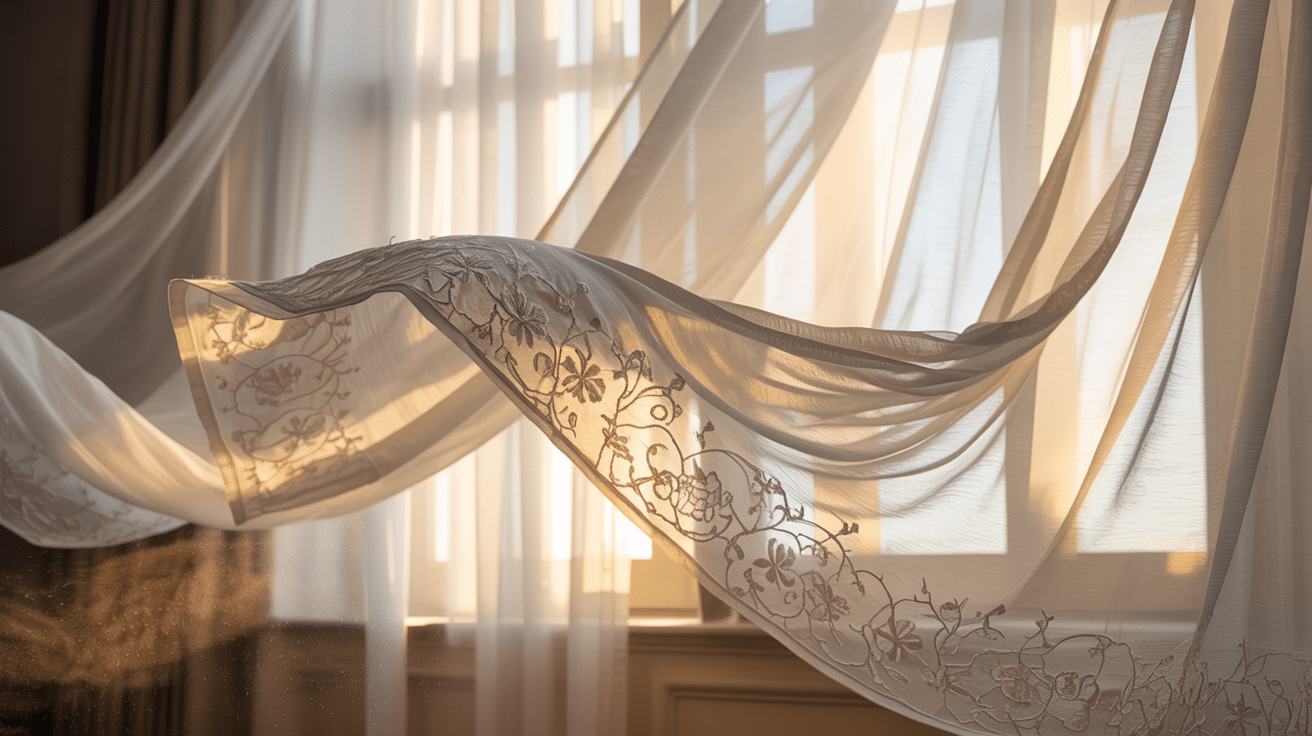
Different curtain lengths create entirely different looks in your room. The curtain lengths chart is an essential tool.
From floating just above the floor to pooling dramatically below, each length serves a purpose and fits specific spaces better than others.
| Curtain Style | Drop from Rod | Best For |
|---|---|---|
| Sill Length | Ends at the window sill | Kitchens, small windows, café-style spaces |
| Apron Length | 4″– 6″ below the sill | Bedroom, above furniture like radiators |
| Floor Length | Just touches the floor | Living rooms, dining rooms, and formal settings |
| Puddled Length | 1″–6″+ pooled on floor | Romantic, dramatic, or traditional aesthetics |
Selecting Curtain Lengths for Different Styles
Curtain size isn’t one-size-fits-all; it should reflect the room’s purpose and personality. A minimalist living room may need clean, floor-length panels, while a grand dining room might call for puddling drapes.
Consider ceiling height, window placement, and decor style to find the perfect size for each space.
Minimalist Rooms
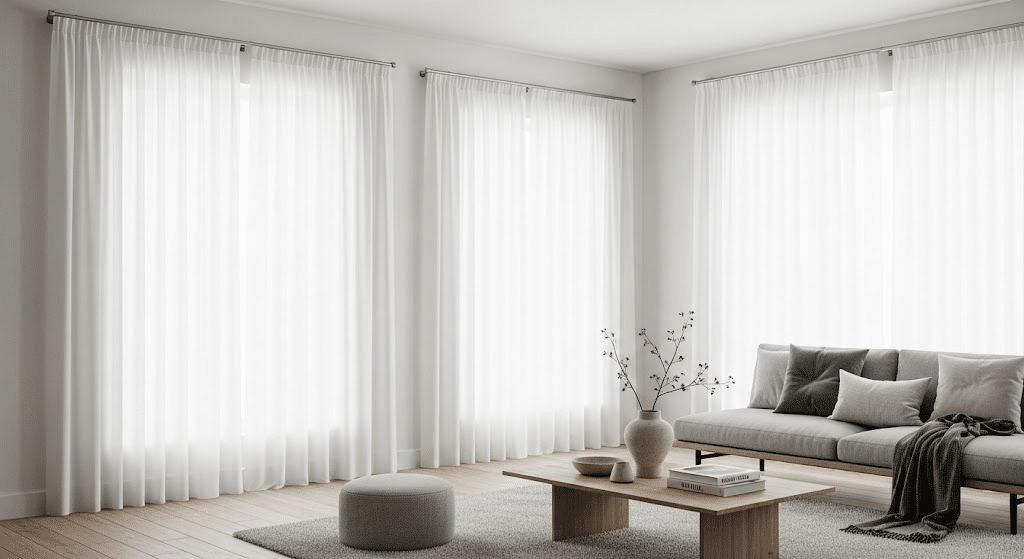
In minimalist interiors with standard 8–9 ft ceilings, stick to 84″–96″ floor-length curtains in light fabrics and neutral tones.
Mount rods 4–6 inches above the window to visually extend the height.
Keep widths around 1.5 × the window size for a clean, streamlined look that complements minimal design without overwhelming the space.
Traditional Rooms

Traditional rooms with 9 –12 ft ceilings pair beautifully with 108″–120″+ curtains that either kiss the floor or puddle elegantly.
Opt for 2 × 2.5 × window width to accommodate pleats and ornate drapery styles. Heavy materials like velvet or jacquard add drama and richness, especially when mounted high near crown moldings.
Modern or Transitional Spaces
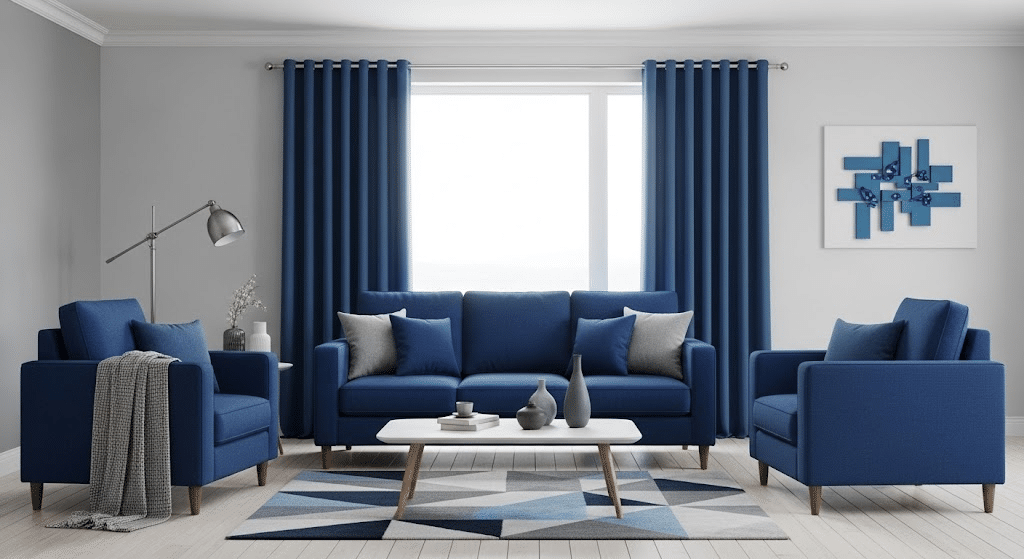
Modern and transitional rooms work best with 96″–108″ curtains for a sharp, tailored effect. Choose fabrics that are structured yet soft, and mount rods 6–10 inches above the frame for balance.
Use 2× fullness for a balanced silhouette that adds both warmth and architectural interest to the room.
Bohemian or Eclectic Rooms
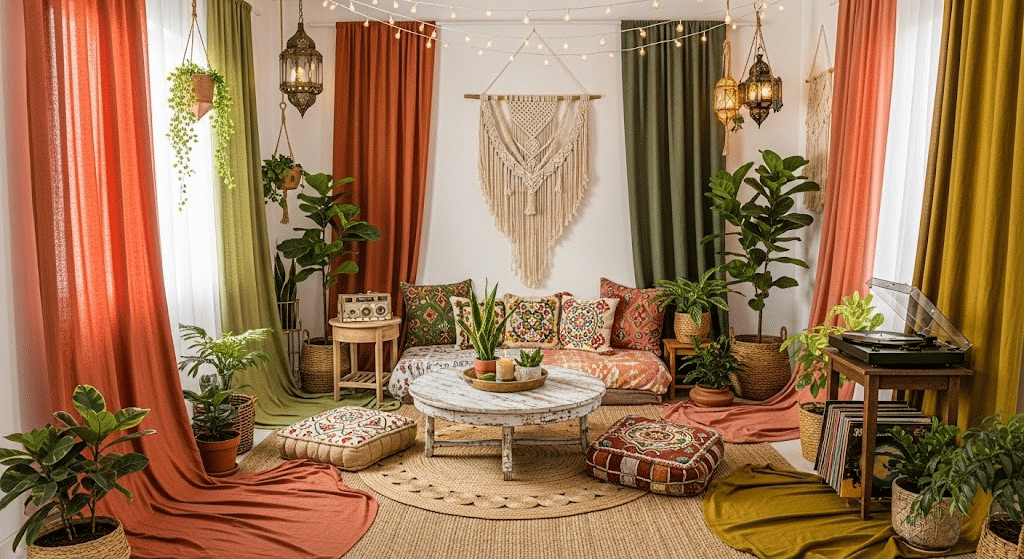
In boho or eclectic rooms, curtain size is flexible; go for 108″+ puddled lengths even with mid-height ceilings to create relaxed, artistic vibes.
Mix textures, layer sheers with heavier fabrics, and allow widths to vary from 1.5× to 2.5×depending on the desired softness or drama in the room.
How to Keep Curtains in Shape?
Proper curtain care keeps your window treatments looking fresh and hanging straight. I use these simple techniques to maintain my curtains and avoid costly replacements.
- Steam while hanging – Use a handheld steamer 6 inches away from the fabric
- Iron on low heat – Always test hidden areas first and use a pressing cloth
- Clean before storing – Dirt and oils can set permanently during storage
- Fold loosely or roll – Prevent deep creases with gentle storage methods
- Use breathable bags – Avoid plastic that traps moisture and causes mildew
- Add curtain weights – Sew-in or clip-on weights stop pulling and bunching
- Install magnetic tiebacks – Keep panels neat and add decorative touches
- Keep spare hardware – Replace broken rings and hooks before they damage fabric
To Conclude
Getting the perfect curtain fit really comes down to measuring twice and buying once.
I’ve shared this curtain size chart and sizing tips because nobody should have to live with windows that look awkward or unfinished.
The right measurements make all the difference between curtains that look homemade and ones that look professionally installed.
Now it’s time to grab that measuring tape and change the look of your windows. Your perfectly fitted curtains are just a few measurements away from making your whole room look better.
Don’t let another day go by with windows that don’t do your home justice.


